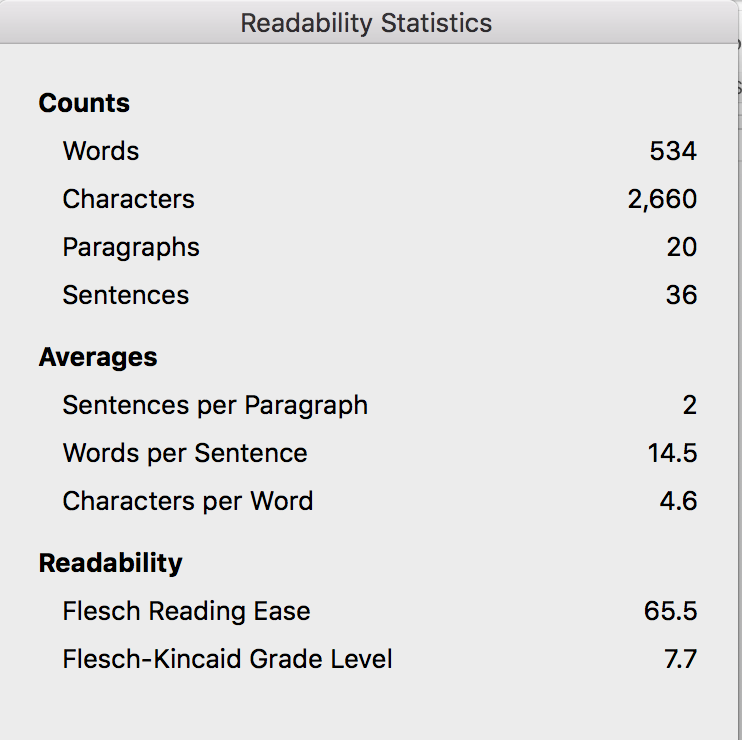Save Time: Get 5 Simple Writing Tips
you can put to use in 10 minutes
Readability: An Easy Way to Make Your Writing Clear
Award-winning writer Kathy Widenhouse has helped hundreds of nonprofits and writers produce successful content , with 750K+ views for her writing tutorials. She is the author of 9 books. See more of Kathy’s content here.
Updated 7.12.25
Readability is the ease with which a reader understands your writing. You’ve faced the frustration of wading through a piece more than once in order to understand it. But you can help your readers avoid that irritation.
Easy reading is part of the recipe for simple, clear writing. Your readers are busy and distracted. They want to understand what you have to say and they want to do so quickly.
When you write in a style that is readable, you help them do so.
Simple writing does not mean that your ideas are simple, but rather that you present them in a way that is accessible.
There are only a few instances when easy readability may not apply: academic writing, technical writing, and legal writing, for instance. Even in those projects, clarity is important.
Clear, readable writing is the mark of both quality content and quality copywriting – articles, blog posts, web pages, letters, social media, emails, books, and most any project you undertake.
Two Easy-To-Use Tools Are at Your Disposal
The good news is that there is an easy, measurable way you can check your writing to find out how readable it is. With a few simple edits, you can make it easy (or easier) to read.
The most familiar tools are the Flesch Reading Ease scale and the Flesch-Kincaid Grade Level scale. The scales are included in many word processors. If your program doesn’t include this checker, you can use an online Flesch-Kincaid readability test instead.
The two scales rate your text with numeric scores by measuring word length and sentence length.
Flesch Reading Ease: this score indicates how easy it is to read the text. Higher scores indicate material that is easier to read (with 120 as the highest score). Lower numbers mark passages that are more difficult to read. An average 6th grade student produces written work with a readability ease score of 60-70.
Flesch-Kincaid Grade Level: this score shows the text’s readability by the average U.S. student according to grade and month. For example, a score of 6.2 indicates a reading ability of a student who is in the second month of the 6th grade.
How to Use the Tools
The simplest way to find out if your writing is ready for a wide audience is to test it.
- Find and enable the Flesch-Kincaid scales in your word processor program. They’re usually a part of the Spelling and Grammar checker.
- Write, edit, and save your text. Test it in the checker. Once you find and replace spelling corrections, you will see a small window that lists the text’s readability statistics.
- Aim for a 6th-8th grade reading ease and reading level in your content and copy. Make adjustments as needed to sentence length and word length. Test again until you are satisfied that your writing is readable. (Like I did with this one. Take a peek at the statistics above.)
Why Should You Aim for a 6th-8th Grade Reading Level?
The lower the grade level, the faster the read. Even those who read at higher levels will respond better to copy written at a 6th or 7th grade level. It’s a format that is simple enough to get your message across quickly and also allows you to reach audience members who may not have strong reading skills.
More about Self-Editing
Write Simply: Avoid 3 obstacles that keep you from being readable ...
Simplify Your Writing: Why Word Choice Matters ...
Want Clear Writing? Make It Short ...
Use the 4 Cs of Writing (But Only If You Want Readers to Understand You) ...
Avoid Jargon in Your Content So Outsiders Feel Like Insiders ...
Self-Editing: Swap Out These 7 Overused Writing Words ...
Why You MUST Master a Conversational Writing Style ...
19 Practical Conversational Writing Tips ...
3 Great Reasons to Use an Online Word Count Tool ...
Write Cleaner to Sound Professional and for Better Results ...
Self-Editing Tip: Start a sentence with the subject, not extra words ...
Write better descriptions when you ditch these 2 words ...
4 Simple Copywriting Tricks Anyone Can Master ...
3 Simple Tips for Writing Clearer Web Pages ...
Passive voice: it's an easy fix with this writing tip ...
Exclamation Point?! When in Doubt, Leave It Out ...
More Copywriting Basics
Basic Copywriting: What It Is and Why You Need It ...
Kinds of Writing Projects that Copywriters Do ...
Get more writing tips on our Basic Copywriting Pinterest board...
Parallel Construction Explained: a simple mark of quality content writing ...
Basic Copywriting: Is It a Feature or a Benefit?
Basic Copywriting: Make the "You Rule" Work for You...
Basic Copywriting: Know Your Audience Before You Write ...
Basic Copywriting: Does Your Headline Do Its Job?
Return from Readability: An Easy Way to Make Your Writing Clear
As an Amazon Associate I earn from qualifying purchases.
Share This Page

Named to 2022 Writer's Digest list
BEST GENRE/NICHE WRITING WEBSITE


Stop Wasting Time!
Grab your exclusive FREE guide, "5 Simple Writing Tips You Can Put to Use in 10 Minutes or Less"












